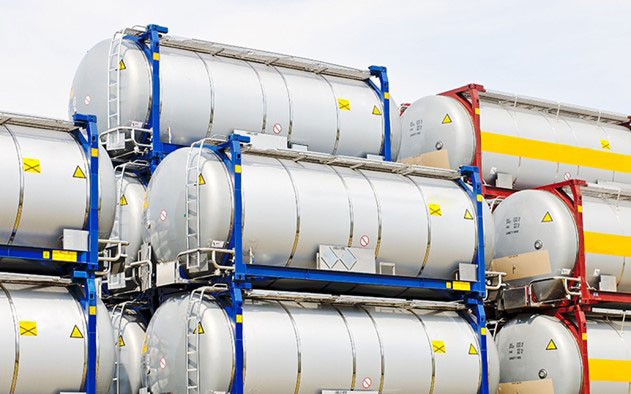The use of fossil fuels is indeed decreasing day by day, but we still directly or indirectly use different types of chemicals, most of which are made from liquids that are based on fossil fuels. As a rule, to produce various chemical products, liquid raw materials must be moved under certain conditions. For this reason, special tanks known as ISO tanks have been produced. These tanks can move liquid chemicals in the safest possible conditions. If you are also curious to know more about the different types of ISO tanks, we suggest you follow us to the end of this content.
ISO tank is used to carry industrial chemical and petrochemical liquids. These steel container tanks are capable of carrying land, rail, and sea. These container tanks can be used to carry liquefied gasses, flammable liquids, toxic liquids, and edibles. ISO tank is made from a cylinder tank mounted on a container. ISO tanks can load up to 23 tons.




Usage of ISO tanks
Many of the things we use in life directly or indirectly involve various chemical or petrochemical materials. To make these materials, you need ingredients. Many of these ingredients are in liquid form. These liquids should be transported by special tankers in international transport. As you know, liquids can be moved with the slightest shake. This is why it’s so much harder to carry liquids than solids. In addition, there is a possibility of leakage in liquids. Many of these liquids are toxic or inflammatory or harmful to the environment. All of this makes it necessary to have specific and unique tools and technologies to transport these liquids. ISO tank and flexi tank are used for this. The technology used in the construction of these tankers makes it possible to take the capability of moving from liquids. To achieve this, metal sheets are usually used in the construction of these tankers to create friction. Also by controlling heat and weather factors, the flammability of these liquids is completely neutralized. In addition, these tankers are completely liquid leak resistant. As we told you before, ISO or flexi tanks are used to transport liquids that have special chemical properties. For example, these chemicals may react easily with other materials, be toxic and flammable, or be harmful to the environment. Due to these unique features, special tanks should be used to transport them. These tanks are designed in such a way that they can move cargo from place to place in the safest possible ways without any damage.ISO tank and dimensions
ISO tanks are available in 3 types 20 ft, 40 ft, and 45 ft. Of course, the 20 ft type of these tanks is the most common type and most ISO tanks are of the 20 ft type. The 20 ft ISO tank has 6m length, 2.4m width, and 2.6m height. The 40 ft type is 12 meters long, 2.4 meters wide and 2.9 meters high. The 45 ft type is 13.7 meters long, 2.4 meters wide, and 2.9 meters high.
safety and security
There are many methods and materials for stabilizing and securing the ISO tanks and flexi tanks. Conventional restraint methods such as the use of steel straps are widely used. The use of polyester straps and whips and artificial weaves are also common today. Dunnage bags are also used to hold single loads in place. A load of an ISO tank or Flexi tank can be the target of theft. In these cases, the container may have a security system consisting of a motion detector and an internal panel. The panel can activate a siren or light to prevent intruders, or use a radio signal to alert security guards. Items that are packaged incorrectly may come loose, causing an internal motion detector incorrectly. If criminals break in by cutting the wall of the container, the motion detector will be blocked and useless. Tomographic motion detectors on containers work well because they do not require a line of sight to detect motion. The entire dish is covered by a volumetric grid that is not blocked by equipment or load. Detecting tomographic motion is not susceptible to incorrect detection due to dirty gathering. As we mentioned before, an ISO tank or a flexi tank is completely safe against ignition, leakage, and any internal damage.
